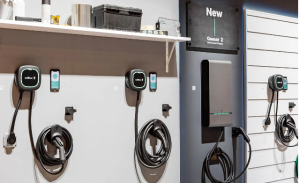Vanti’s Vice President of Large Customers, John Jairo Contreras explained in detail what the balance of the use of vehicular natural gas has been in the buses of the mass transportation system of Bogotá, Colombia.
In an interview offered for the newspaper El Tiempo, Contreras points out that according to a 2020 study, the concentration of particulate material in the stations was reduced by 50%.
The Vice President of Large Customers of Vanti highlighted that the reduction of emissions was achieved by only implementing 25% of the renewal of all transport units last year. “When the fleet is complete, the benefit will be significant.”
“Natural gas buses have a slightly higher share compared to electric ones. As they are renewed contracts, this participation will be maintained for up to 10 years (…) The experience has been very good, we have not had any complaints and when that happens it is that things are working well,” he said, noting that Vanti’s goal is to serve 1800 buses out of a total of 6000 buses that the Transmilenio system has.
Regarding the investment of new buses, Contreras explained that natural gas buses have 9% less expenses in relation to diesel buses and 20% in comparison to electric buses.
“It is the argument we have for the use of natural gas buses. They have a performance that is desirable for the city, almost 100% reduction of emissions of particulate materials and 50% of greenhouse gases. If these two parameters are met successfully, the alternative with the lowest present value should be chosen,” he said.
On the other hand, Contreras indicated that the Colombian capital has the infrastructure that requires a transition of buses that use natural gas.
“We in awarded yards have a state-of-the-art infrastructure with fast filling and sufficient to cover this fleet. We have three active stations and we will reach five by the end of this year.”
At the beginning of the year 2020, Vanti reported that the company made an investment of seven million dollars in new natural gas stations that allow tanks of 8 and 10 minutes per bus, thanks to the rapid filling technology for mass transport systems manufactured and Assembled in Canada.
Fuel in private vehicles
Likewise, Contreras explained that the growth of light vehicles (using vehicular gas) will continue to increase due to the great results that Vanti has had with these cars.
“Around 78 thousand active vehicles circulate through the areas of influence of Vanti and there are 190 service stations that perfectly cover that demand (…) 8-10 years ago the conversions of (natural) gas had economic benefits but dragged a series of negative opinions such as the loss of power, are myths that had reality from the technological point of view but today nobody talks about that.”
Vanti
It is widely known as one of the main companies dedicated to the supply of natural gas, the same with which the Transmilenio fleet works. It has 30 years of experience in providing services that offer energy solutions, not only in the Colombian capital but in the rest of the Andean country.
Colombia, heading to the “Latam Mobility Virtual Summit”
Adaptations of channels for cyclists, increase of units in the fleets of electric buses and expansion of charging infrastructure for vehicles 0 emissions, are three of the aspects that have made Bogotá one of the most sustainable capitals in Latin America; a fact that will be discussed at the “Latam Mobility Virtual Summit: Colombia, Central America and the Caribbean”, which will take place on April 9 and 10.
The event will bring together the most prominent representatives of the public and private sector in the region.
For more information, go to www.latamobility.com/summits or join the Latam Mobility LinkedIn network.




